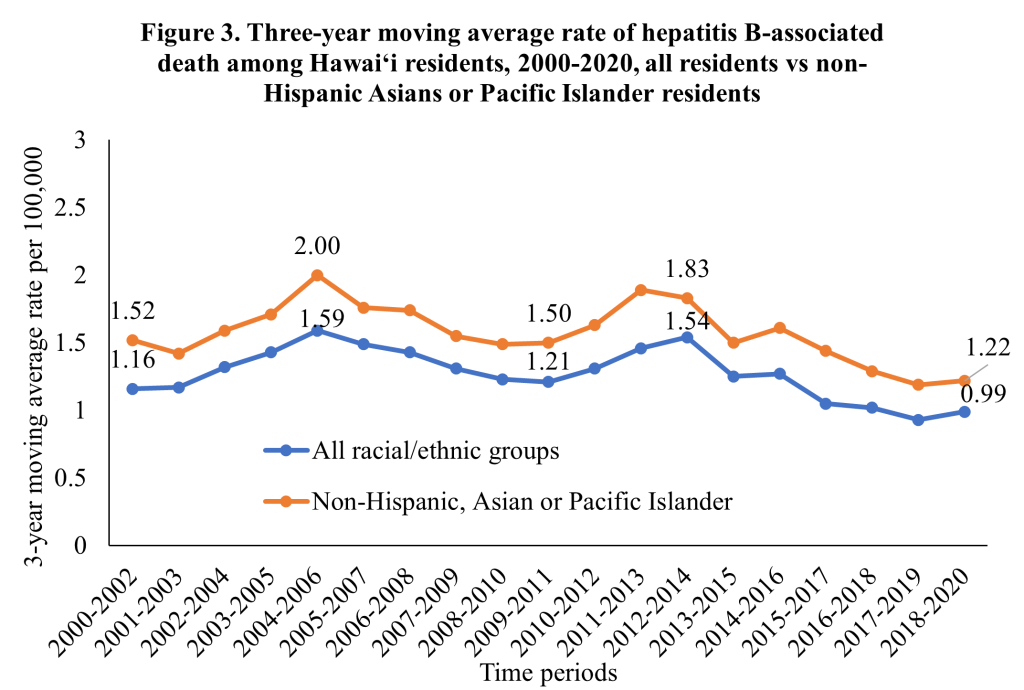Upcoming Hawaiʻi Hepatitis B Mortality Report
Below is an edited excerpt from the forthcoming report, Hawaiʻi Hepatitis B and Liver Cancer Incidence and Mortality Report, from the Hawaiʻi Department of Health. Once completed, it will be posted on the Harm Reduction Services Branch and Hep Free Hawaiʻi websites.

Hawaiʻi has the highest hepatitis B-associated death rate nationwide. In 2019, the rate for Hawaiʻi (1.17) was almost 3 times the national rate (0.42).[1] This might be partially explained by the fact that Hawaiʻi has a disproportionately higher percentage of Asian and Pacific Islander people—who experience the highest hepatitis B-associated death rate.[2] For example, API people accounted for 60.1% to 65.3% of the general population in Hawaiʻi, but only 6.9% among the general population for the US.[3] In 2019, at the national level, the rate for API people was 2.1, approximately 7.5 times the rate among non-Hispanic White persons.[2]
Although rates in Hawaiʻi were much higher than the national rate, there has been progress in reducing hepatitis B-associated deaths both statewide and among API people in Hawaiʻi. This is evident when comparing the age-adjusted hepatitis B-associated mortality rates from 2012-2014 to 2018-2020, which decreased from 1.54 to 0.99 statewide. To continue this progress, a 62.6% reduction from the 2018-2020 rate is needed for Hawaiʻi to meet the national 2025 goal of 0.37 deaths per 100,000 population. Among API people, the age-adjusted hepatitis B-associated mortality rates decreased from 1.83 during 2011-2013 to 1.22 during 2018-2020 (see Figure 3 above), which is below the national 2025 goal of 1.84 per 100,000 population for API people.[2]
[1] Centers for Disease Control and Prevention (CDC), National Center for Health Statistics. Multiple Cause of Death 1999–2019 on CDC WONDER Online Database. Accessed on May 6, 2022. http://wonder.cdc.gov/mcd-icd10.html [2] Centers for Disease Control and Prevention (CDC). 2021 National Viral Hepatitis Progress Report. Accessed on May 16, 2022. https://www.cdc.gov/hepatitis/policy/NPR/2021/NationalProgressReport-HepB-ReduceDeaths.htm [3] U.S. Census Bureau. Annual Estimates of the Resident Population by Sex, Race, and Hispanic Origin: April 1, 2010 to July 1, 2019. Accessed on May 18, 2022. https://www.census.gov/data/tables/time-series/demo/popest/2010s-national-detail.html
